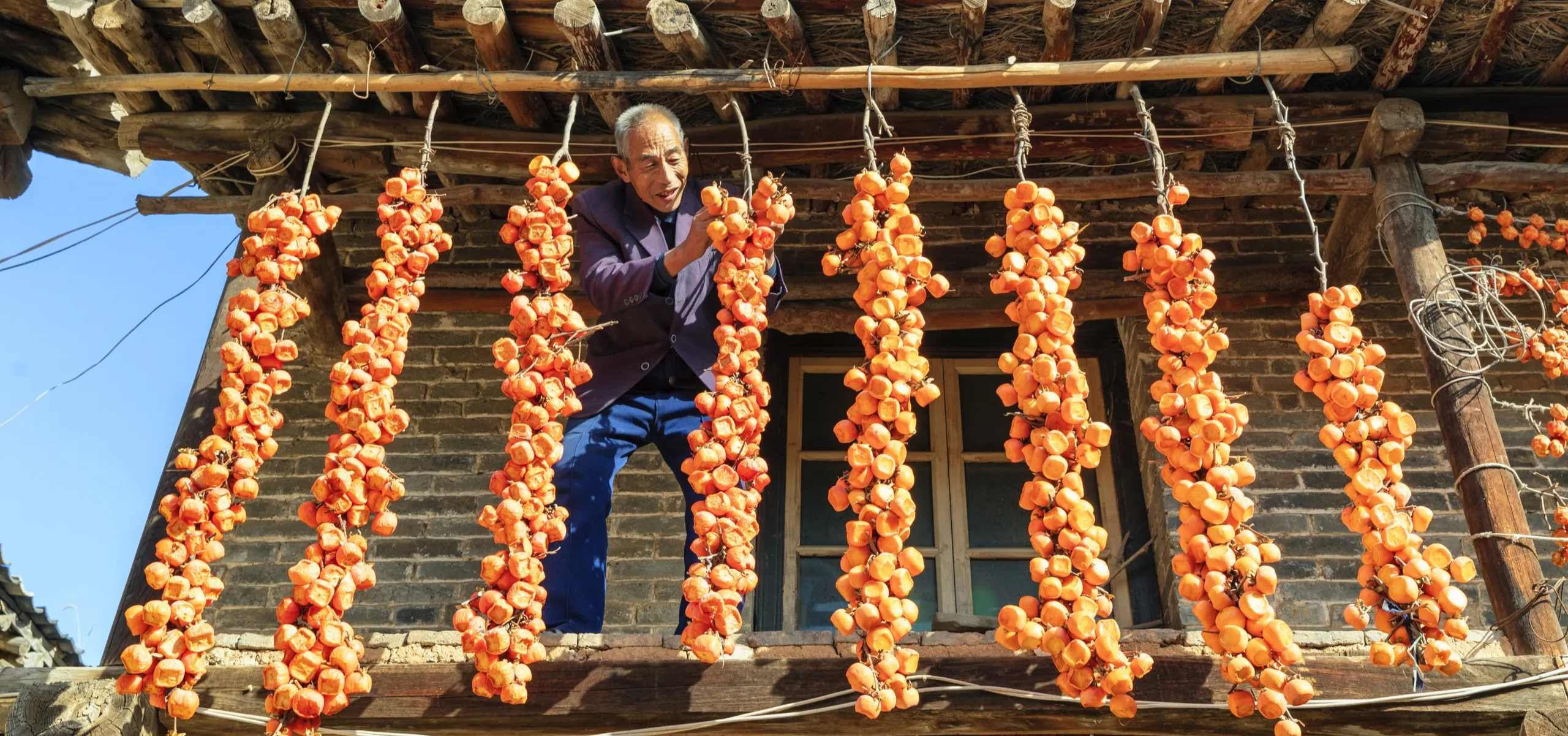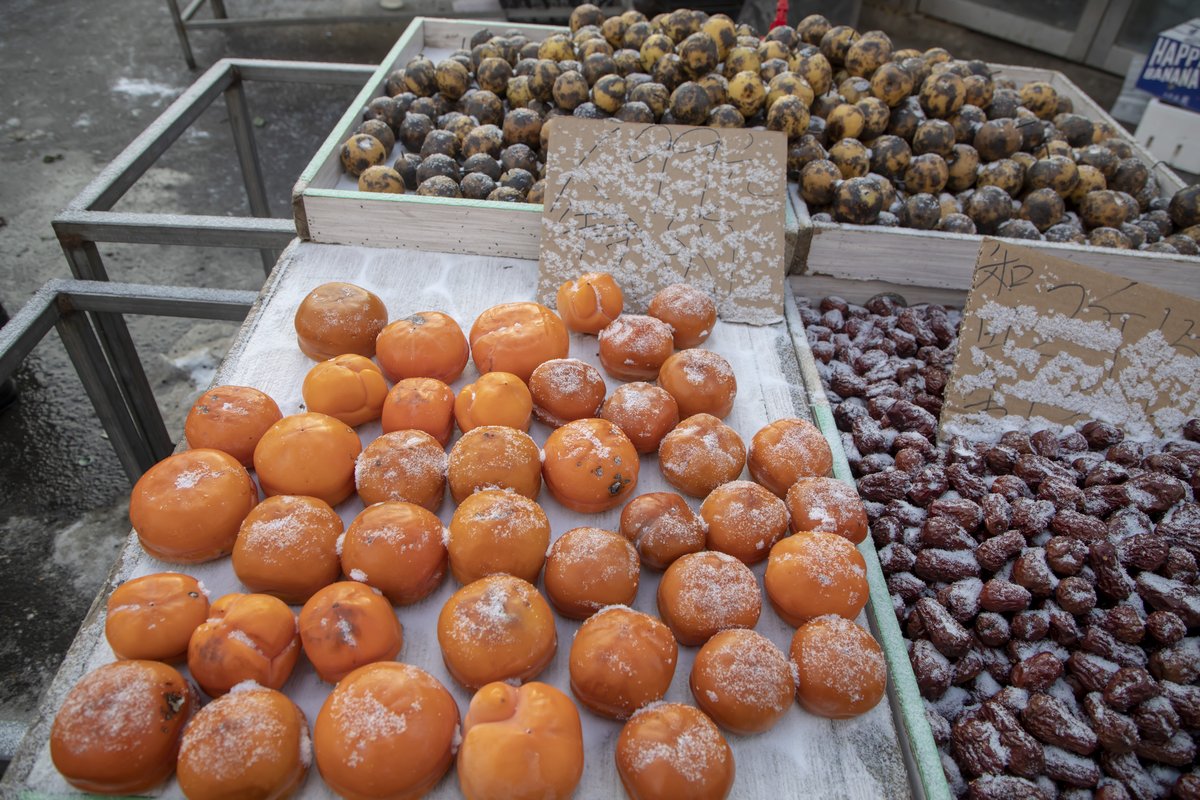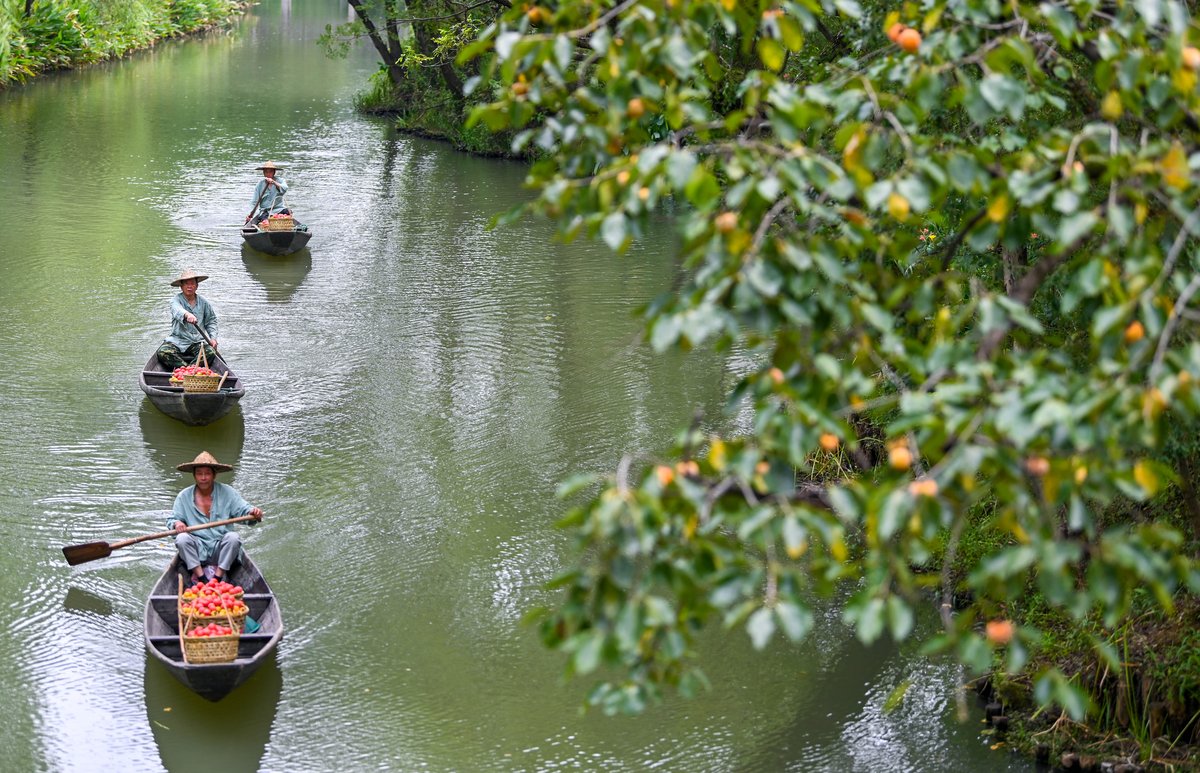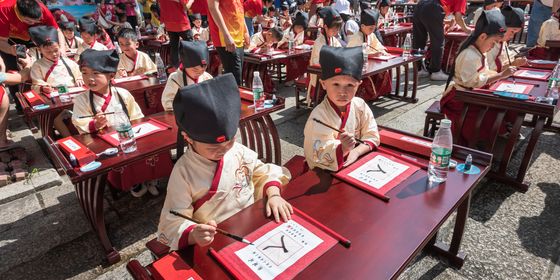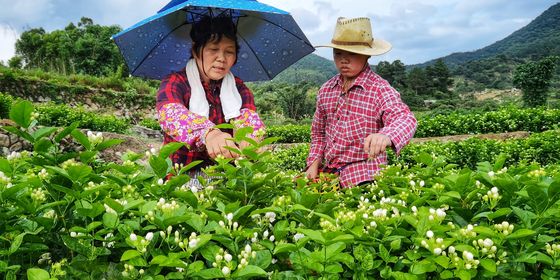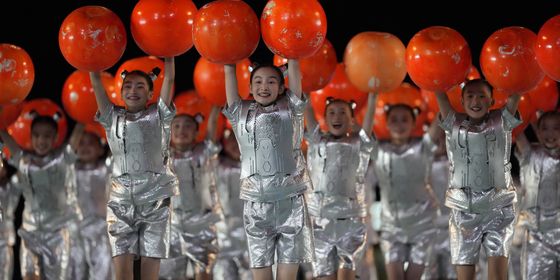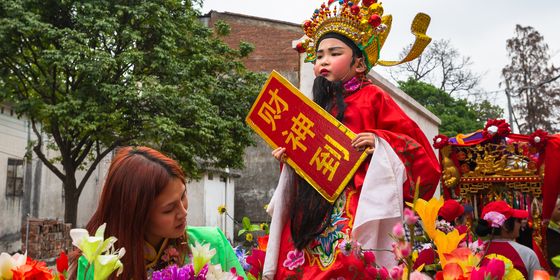Busting ghosts, dyeing cloth, or making frozen treats—Chinese persimmon is a fruit of many uses
Like miniature orange lanterns hanging from trees, persimmon lights up this gloomy autumn season. Since its Chinese character, 柿 (shì) is pronounced the same as 事, the character for “things“ or “matters,“ this bright fruit conveys the wish of things going well. Traditionally, people plant persimmon trees in front of homes and eat the fruit during the wedding. The classic painting Picture of the New Year with Auspicious Signs (《岁朝佳兆图》), by the Ming emperor Zhu Jianshen (朱见深) in 1481, also shows the legendary ghostbuster Zhong Kui (钟馗) walking with a little ghost holding a plate of persimmons, conveying the idea that the fruit could help chase away evil spirits and bring peace and prosperity.
Allegedly, the persimmons even saved the life of Zhu Jianshen‘s ancestor Zhu Yuanzhang (朱元璋), before he became the founding emperor of the Ming dynasty (1368 – 1644). Zhu Yuanzhang was born a poor peasant, and one day, cold and starving, he passed a village and saw a giant persimmons tree with fruits in frost. He treated himself to a persimmon feast. In 1355, when Zhu, now the emperor, stumbled upon this village, he saw this tree again. He took off his red robe and wrapped it around the tree, awarding it the title “Duke of Frost” (凌霜侯).
Fall is the traditional season for enjoying persimmon, especially the solar term of Frost Fall (霜降), which typically falls on October 23 and marks the transition from autumn to winter. Persimmons ripen best around this time, becoming thin-skinned, thick-fleshed, juicy, and sweet.
A classic way to enjoy persimmons in northern China, especially the Northeast, is to bite a whole through the skin and suck out juice from inside. As persimmons get frozen in the cold weather, it tastes even more refreshing. As the 20th century writer Lao She (老舍) describes in his novel Rickshaw Boy (《骆驼祥子》), the title character Xiangzi “bought a frozen persimmon, and when he took a bite, his mouth was full of ice! It was so cold that it slowly cooled from his mouth to his chest, sending a shiver down his body. He finished it in a few bites, his tongue a little numb and his heart cozy.” Despite Xiangzi’s hard life as a rickshaw driver, the frozen persimmons gave him a moment of sweet, cold pleasure.
Compared to the frozen persimmons, the dried persimmon cakes (柿饼) are much milder in taste and can be a popular snack for young and old alike. It‘s made by peeling off the skin and air-drying the flesh for around a month, letting it absorb the sunshine and retain its sweetness. As water evaporates from the flesh, the glucose and fructose forms a thin layer of white frost on the surface. This natural frost is considered particularly soothing for the throat.
In parts of northern and northwestern China, locals hang the peeled persimmons in neat bunches like curtains of orange pearls. It is a poetic way to celebrate the persimmon harvest. While persimmon cakes are usually dry, the Fuping variety from Shaanxi province retains some sweet juice inside, which can melt in the mouth.
The persimmon leaf was also used as a natural canvas for Chinese classic painting. As a herb, it was used to stop bleeding, relieve pain and reduce high blood pressure. One can also eat fresh persimmon leave by shredding them into slices and cooking them in porridge, seasoned with sugar; or make the persimmon leaf tea with chrysanthemum flowers.
Fermented persimmon can be even used in making natural dyes. Fabrics dyed with persimmon are left out to dry in the sun, which paints a warm orange tint to the cloth and grows darker when used in the sun, the wind, and the rain. Over time, persimmon dye also gives the fabric a hard, leather-like texture, and is resistant to water and corrosion, so it has been applied on umbrellas, boats, and even architecture since the Tang dynasty (618 – 907). The Hangzhou black folding fan, a specialty of the city, can be used like an umbrella on rainy days—and the secret was the persimmon dye on its surface.
From late September to mid-October each year, Hangzhou’s Xixi Wetlands host the Persimmon Festival. Visitors can row boats to pick from over 7,000 persimmon trees in the area and participate in challenges, such as stacking the highest persimmon “tower.“ They may take home basket upon basket of fresh persimmons to serve as juicy treats, organic dyes, and perhaps natural “ghostbusters” that can bring peace to the household.





